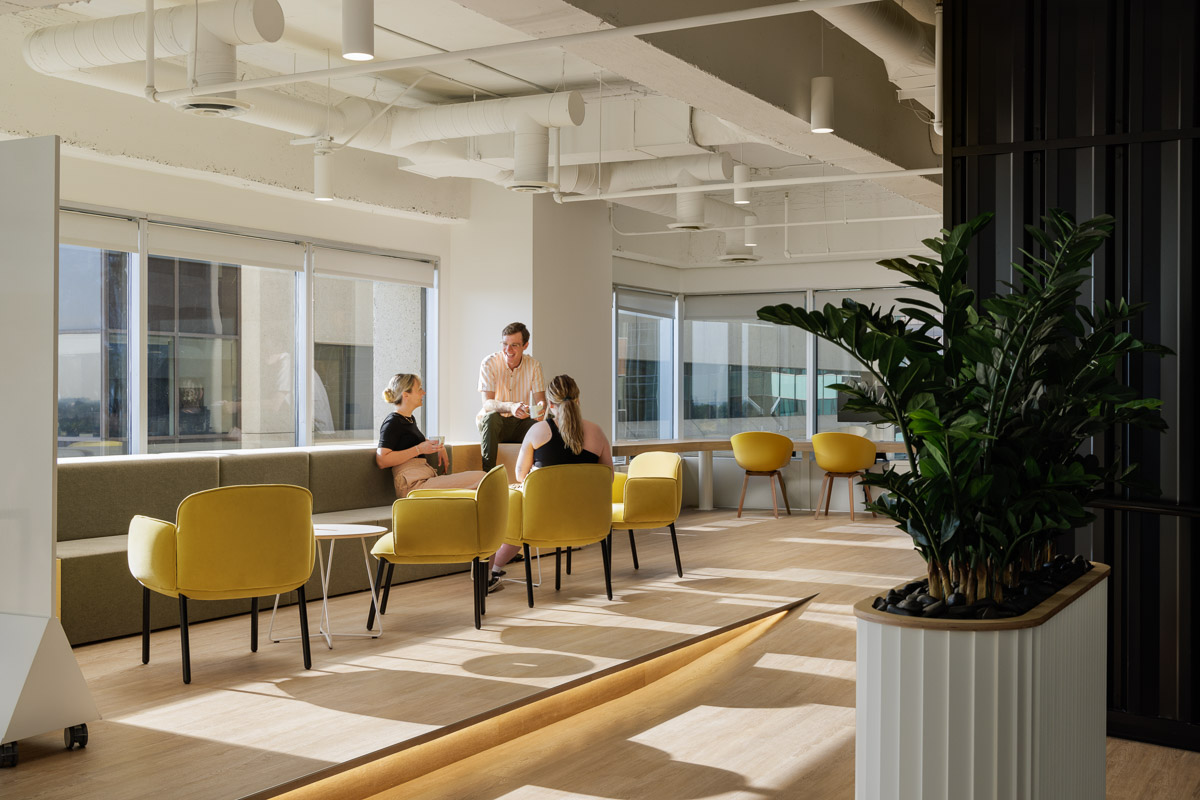The role of workplace design in your ESG strategy
Integrated environmental, social, and governance (ESG) strategies are increasingly becoming a priority for organizations worldwide. At Holland, we’ve had the privilege of working with CEOs who understand that implementing their ESG strategies, and even transforming their organizational culture, can be done by reshaping the physical spaces where their teams work. Interestingly, ESG strategies can influence the design and construction of workplaces in several ways (Gensler, n.d.). In this article, we explore why CEOs are turning to workplace design to drive cultural change.

Integrated environmental, social, and governance (ESG) strategies are increasingly becoming a priority for organizations worldwide. These strategies encompass a range of sustainability and ethical considerations, including reducing carbon emissions, promoting diversity and inclusion, and ensuring transparent governance practices. According to a survey by Accenture (2024), 62% of consumers globally want companies to take a stand on social, environmental, cultural, or political issues, and 42% have stopped doing business with a company due to its actions (or lack thereof). In 2023, SHRM reported that 86% of employees at companies with ESG-related goals reported feeling proud, finding greater meaning in their work, and expressing a desire to remain with their employer.
At Holland, we’ve had the privilege of working with CEOs who understand that implementing their ESG strategies, and even transforming their organizational culture, can be done by reshaping the physical spaces where their teams work. Interestingly, ESG strategies can influence the design and construction of workplaces in several ways (Gensler, n.d.). Here's why CEOs are turning to workplace design to drive cultural change.
The role of workplace design in culture shifts
Organizational culture is the beating heart of any company. It defines the collective values, beliefs, and behaviours that guide how employees interact and work together. A strong and positive culture fosters collaboration, innovation, and employee engagement, driving business performance and success. Conversely, a toxic or outdated culture can stifle creativity, hinder productivity, and lead to high turnover rates (Great Place To Work, 2023).
The CEOs that we have worked with understand that culture is not something that can be changed overnight with a memo or a new policy. It's deeply ingrained in the fabric of an organization and requires a holistic approach to transformation. This is where workplace design comes into play. By reimagining the physical environment, CEOs can create spaces that reflect and reinforce the desired cultural attributes.

Our approach to leadership alignment
When working with organizations, our first step is to gain a deep understanding of the values and priorities of their leadership team. Through collaborative discussions, we uncover the overarching principles that drive decision-making at the highest levels of the organization. Armed with this insight, our team crafts workplace solutions that reflect and reinforce these values, ensuring seamless alignment between physical space and strategic objectives.
Tailored solutions for maximum impact
Environmental sustainability
Companies committed to ESG goals often strive to minimize their environmental footprint. This can translate into workplace design through the incorporation of eco-friendly materials, energy-efficient systems, and sustainable practices such as recycling and waste reduction (Deloitte, 2023). Designing workspaces with ample natural light, efficient heating and cooling systems, and green spaces not only reduces environmental impact but also creates a healthier and more pleasant environment for employees.

Social responsibility
From space planning and layout design to furniture selection and branding integration, every aspect of our work is tailored to align with an organization’s values. Workplace design also plays a crucial role prioritizing employee health, safety, and comfort. This may involve providing ergonomic furniture and designing flexible work areas to accommodate different work styles.
One of the most common goals CEOs have when approaching us is to foster a culture of collaboration and innovation. Traditional cubicle farms and closed-door offices are replaced with open-plan layouts, collaborative zones, and breakout areas designed to encourage spontaneous interactions and idea sharing. By breaking down physical barriers, we can break down silos and facilitate cross-functional collaboration.

Governance and transparency
The governance aspect of ESG emphasizes transparent and ethical business practices. In the context of workplace design, this can look like open and transparent layouts, clear signage, and visible organizational branding. All can contribute to a sense of trust and accountability among employees. Moreover, CEOs regularly involve their employees in our human-centred design process and solicit their feedback.
Whether the emphasis is on innovation, collaboration, transparency, or sustainability, we translate these principles into tangible design elements that resonate throughout the workspace. How do you think your company’s ESG-related goals would shape the design of your workplace?
Designing the future of work
We're proud to partner with CEOs who understand that the future of work is not just about what you do, but where you do it. If you’re interested in designing the future of your organization, get in touch with our team!


